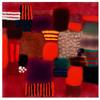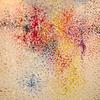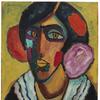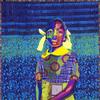Major Exhibition Exploring Subject of Outdoor Pursuits in American Art Heads to Joslyn, Travels
- OMAHA, Nebraska
- /
- January 25, 2017
Wild Spaces, Open Seasons: Hunting and Fishing in American Art, on view at Omaha's Joslyn Art Museum, February 12 through May 7, encompasses a wide variety of portraits, landscapes, still lifes, and genre scenes, including iconic works by Thomas Cole, Thomas Eakins, Paul Manship, and John Singer Sargent, as well as pictures by artists who specialized “in the field,” such as Charles Deas, Alfred Jacob Miller, William T. Ranney, and Arthur Fitzwilliam Tait. The exhibition also sheds new light on modernist studies of sporting subjects by Arthur Dove, Marsden Hartley, and Max Weber. Together, the 64 works in the exhibition illuminate changing ideas about community, environment, national identity, landscape, and wildlife, offering compelling insights into one of our most familiar shared adventures.
Wild Spaces, Open Seasons was organized by the Dixon Gallery and Gardens, Joslyn Art Museum, Shelburne Museum, and Amon Carter Museum of American Art (October 7, 2017–January 7, 2018). This exhibition is supported by an indemnity from the Federal Council on the Arts and the Humanities.
While hunting and fishing may seem to be of interest primarily to sportsmen and outdoor adventurers, depictions of hunters and anglers in American art — often informed by the artists’ own experiences of outdoor life — serve a greater purpose than the commemoration of the hunt. The exhibition's six themes reveal the rich connection of these outdoor activities to all aspects of American history, from changing social and economic concerns to personal and political subjects. Images of outdoor sport as a leisurely pursuit of the middle and upper classes contrast with portrayals of hunters hard at work to feed their families. The hazards of outdoor adventure are dramatized in riveting scenes of danger and uncertainty, from the thunder of a buffalo hunt to an attack by wounded quarry. Other works offer less literal descriptions, trading on enduring mythological associations of the hunt, while the theme of the vanishing wilderness and the gradual transformation of a young nation to an industrial power runs throughout the exhibition. Wild Spaces, Open Seasons is organized into six thematic groupings:
Leisurely Pursuits — Hunting and fishing emerged as middle class pastimes in the nineteenth century, and frontier myths still fed the image of the continent’s limitless resources. Magazines such as Forest and Stream and American Angler emerged in the 1870s and 1880s to serve the burgeoning number of sportsmen and women, yet the late nineteenth century also saw the rise of laws aimed at protecting a diminishing supply of game.
Livelihoods — At the beginning of the nineteenth century, most Americans who hunted did so out of need, but the expansion of agriculture gradually made hunting for the purpose of sustenance virtually obsolete. Still, the fur trade and commercial fishing also generated income, and the paintings in this section explore the ways in which hunting and fishing became a source of financial reward.
Communing with Nature — By 1820, westward expansion, industrialization, urbanization, and the dawn of a national political and economic system were altering the traditional experiences of local life. Americans were losing not only their close-knit communities, but also their immediate contact with the wilderness. Responding to these changes, people turned to the land as a means of cherishing the nation’s identity as well as celebrating the social aspects of experiencing nature together.
Perils — Suspense-filled and often sublime depictions of close calls, tights spots, and struggles to the death enjoyed great popularity in American art during the second half of the 1800s. As the country moved toward modernity, many Americans romanticized a past that celebrated the perils brave hunters might face in the often unforgiving wilderness.
Myth & Metaphor — Mythological images of the hunt in America abound, including depictions of the pursuit of love, spiritual and religious narratives, and allusions to mortality. Hunting images created in a metaphoric guise reflected an understanding of Classical mythology that associated American society with the great civilizations of the past.
Trophies — For the sportsman, the spoils of the hunt were symbols of masculinity, mortality, and nostalgia. To the artist, the desire for a trophy painting gave new meaning to the traditional still life, known as trompe l’oeil, or “fool the eye.” Prized for their cleverness and ability to test the limits of perception, trompe l’oeil still lifes memorialized the hunt for a growing class of sportsmen.
Exhibition Catalogue
Wild Spaces, Open Seasons is accompanied by a fully-illustrated catalogue edited by Kevin Sharp, Linda W. and S. Herbert Rhea Director of the Dixon Gallery and Gardens (Memphis, TN), with an introduction by author Stephen J. Bodio and essays by four American museum curators. The publication is volume 27 in the Charles M. Russell Center Series on Art and Photography of the American West (general editor B. Byron Price; University of Oklahoma Press: Norman). $45 Hardcover (Member price: $40.50); $29.95 Softcover (Member price: $26.96). To purchase, contact Joslyn Art Museum.



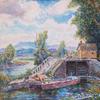




100x100_c.jpg)
